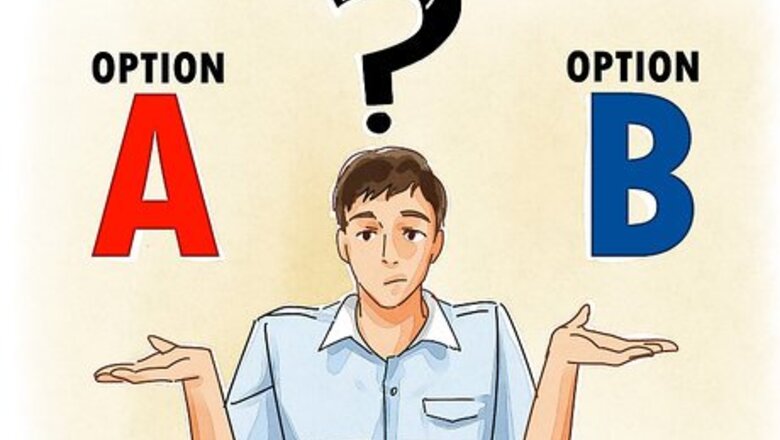
views
Constructing a Hypothesis
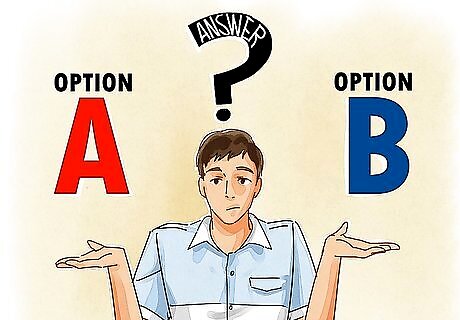
Ask questions. The first step in the scientific method is formulating a question. Make some observation of the world around you, and pose it as a question. You will then use the scientific method to investigate the question and attempt to answer it. The scientific method can be applied to all sorts of questions, for example, you could ask “Will I save money if I stop shopping at Store A and buy my groceries at Store B instead?”

Do some background research. It is likely that someone has asked a similar question in the past and gotten some answers. Research your question using the internet, the library, or other records. Even if you do not find an exact answer, you will gain an understanding of the variables that you need to consider in your experiment. For example, you might find that someone did a study of the prices of groceries at Store A depending on the time of year. While this doesn’t answer your entire question, it does bring to your attention that you should consider the time of year in your experiment.

Answer those questions with a hypothesis. Once you have a thorough understanding of your question, you will need to develop a hypothesis. A hypothesis is a statement that reflects your educated guess as to what the answer to your question might be. A hypothesis absolutely must be falsifiable, or able to be disproven. Start your hypothesis with an educated guess. For example, if you have shopped at Store A and Store B before and you have an instinct that Store B might be cheaper, you could build your hypothesis around that thought. A good hypothesis would be “Store B has lower prices than Store A.” A bad hypothesis would be “The prices of Store B are set by invisible magicians that can never be discovered by people.”

Use the hypothesis to make some prediction. Hypotheses are useful because they allow you to predict the outcome of one thing based on your knowledge about it. Then, you can adjust your hypothesis based on whether or not it was disproven. Keep in mind that a hypothesis can never be “proven.” For example, your prediction might be “If I shop at Store B, I’ll save money.”
Testing the Hypothesis
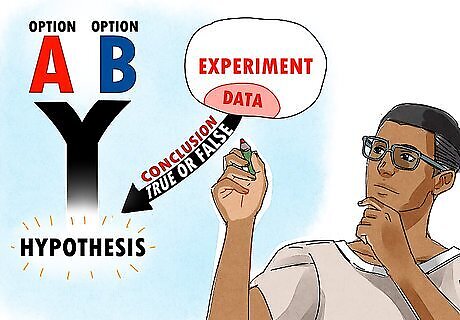
Design an experiment. An experiment is a test, or series of tests, to disprove your hypothesis. If the experiment fails to disprove your hypothesis, that means that it may be suitable for making predictions about the question you have posed. If the experiment disproves your hypothesis, it means that the hypothesis does not accurately predict the outcome of the situation. You might decide that your experiment will be to shop at Store A and Store B and compare the money you spent at each store.
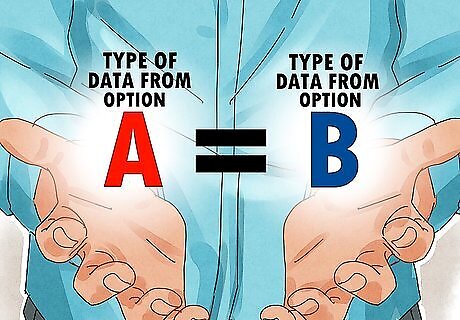
Carry out the experiment. Once the experiment is laid out, you will need to carry out the steps. It is important not to carry out the experiment with bias. The scientific method does not allow for tweaking the experiment to make the results fit what you want. For example, you must commit to buying the same foods at each store for a fair comparison. You should not buy the name brand at Store A, and the off brand at Store B to draw the conclusion that Store B is cheaper. In this scenario, the foods serve as your control and the stores are your variables.
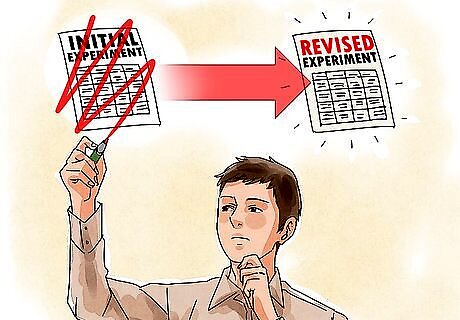
Troubleshoot if necessary. Sometimes, experiments do a poor job of testing the hypothesis. When this happens, you have to troubleshoot your experiment. Ask yourself what went wrong, and how can the next experiment address these issues. For example, you could compare receipts from each store and think that you are saving $15 per week, but you only notice an extra $5 per week leftover. Upon a closer investigation, you realize that you have to buy extra gas each week to get to Store B, and that detracts from your savings. At this point, you would need to redesign your experiment to include gas receipts as well.
Sharing Your Results
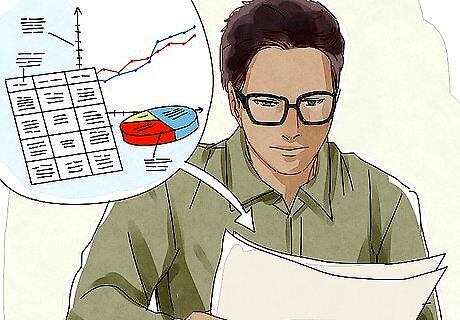
Analyze experimental data. Once you have completed your experiment, you will be able to analyze the data. You will either find trends that are consistent with your hypothesis, inconsistent with your hypothesis, or no trend at all. Inconsistent trends, or no trends, will disprove your hypothesis. Looking at the receipts from each store would allow you to analyze how money was spent during the experiment. If your hypothesis constantly makes accurate predictions, it may become a theory.

Make conclusions based on the data. The data and trends will allow you to draw conclusions about your hypothesis. Sometimes, this will be easiest to express in words, and other times it is more suitable to use graphs or charts to summarize your conclusions. Either way, it is important to keep in mind that even if your hypothesis gave predictions consistent with this experiment, it is still a falsifiable hypothesis. You could summarize the conclusions of your shopping experiment by entering the totals you spent at each store into a spreadsheet and generating a graph from the data. This would make it easy to see if Store A or Store B saved you money.

Replicate the experiment. For an experiment or a result to be scientific in nature, it must be replicable. You, or someone else, must be able to reproduce the same results each time you do the experiment. If your results cannot be replicated, then your hypothesis is not supported. If you go to the Store B and save money one time, but do not save money consistently when going to Store B, your results are not replicable.
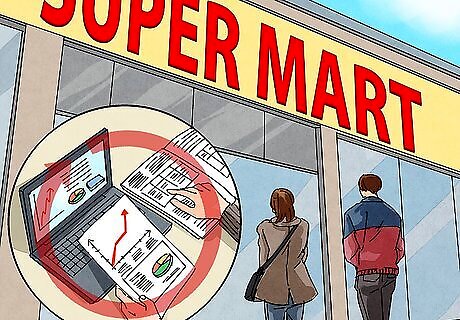
Share your experiment and results with others. Additional versions of the experiment can be carried out by yourself or by someone else. The scientific method is designed so that anyone can get the same results when doing any experiment, given that they are knowledgeable about the procedures. The more times your hypothesis is supported, the stronger it becomes. You can replicate the store experiment by going to both stores multiple times and comparing your results. You could also have a friend go to both stores and analyze their data.

















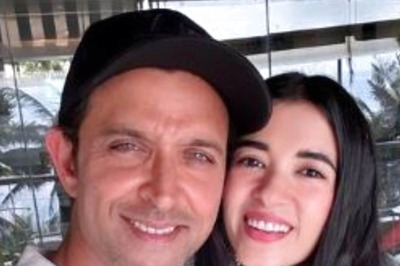

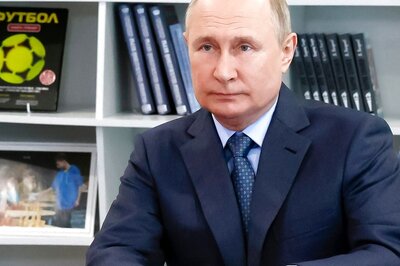
Comments
0 comment